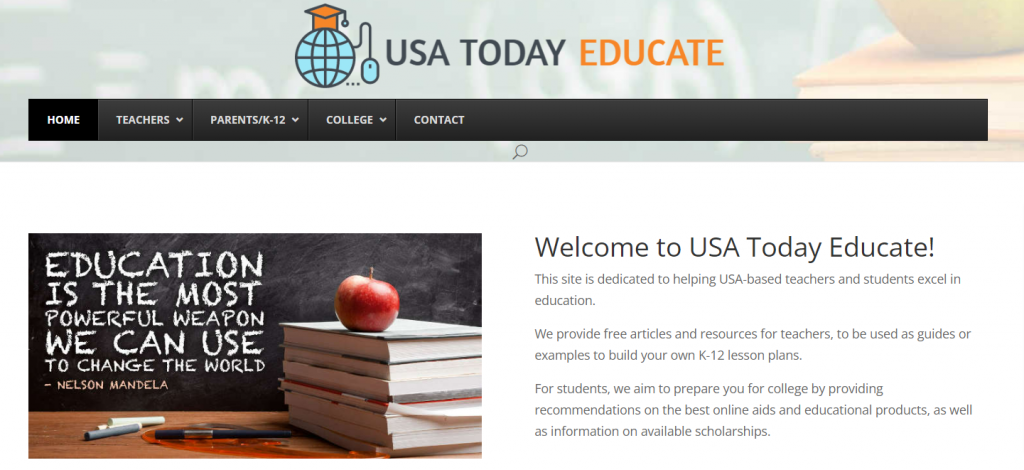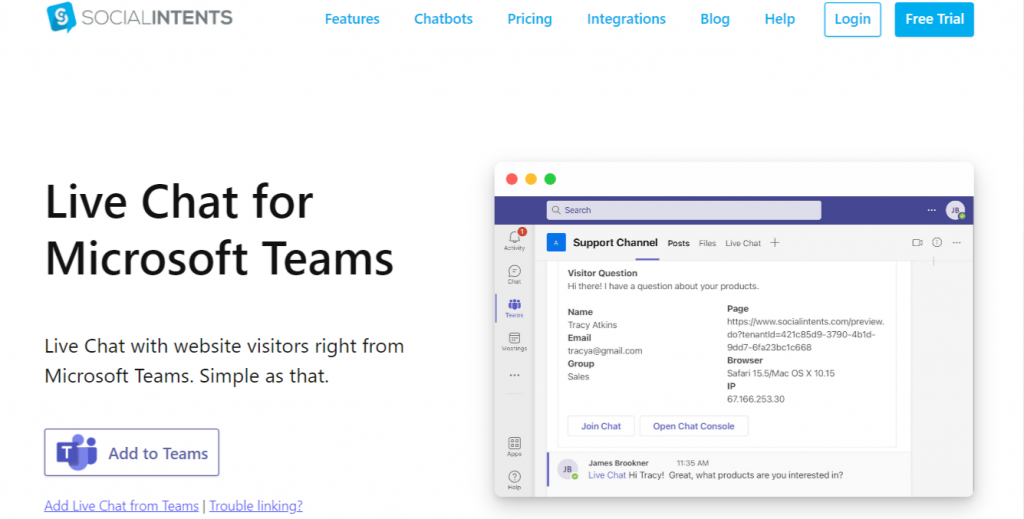Wondering how to provide better customer service in higher education? Looking for ways to improve the support you offer prospective students?
Let’s face it – Higher education in America is getting more and more competitive.
- The number of high school graduates is increasing steadily.
- The number of college applicants has increased too as a result.
- Each student is applying to more than one college.
As a result, colleges in universities are facing quite a challenge. They can no longer just focus on providing education. They need to think and act like businesses in a competitive market, ensuring that they are able to enroll enough and the right kind of students/customers.
In this post, you’ll discover one of the best ways to do it – By providing great customer service.
Let’s do it.
Why is Customer Service So Important in Higher Education
As we discussed earlier that higher education institutions are operating as full-fledged businesses in a thriving market today. So, they must understand what their customers are struggling with.
Let us take just one challenge, the completion rate, for example. Only 60% of all those who started college actually earned a degree within six years in 2017. The numbers are even worse for Black students (39.9 percent) and Hispanic students (54.4 percent).
The National Bureau of Economic Research studied the completion crisis and reported that three out of the top four hurdles can be directly solved by educational institutions, namely:
- Enrolling in the wrong course – Unprepared high school students, students who do not understand the undertakings of a particular course, or students lacking study skills for a particular course.
- Difficulty navigating systems such as enrollment and other processes – The stress of the enrollment process itself, like the selection of colleges, application, and admissions process takes a toll on students’ ability to make the right choice in terms of a college degree.
- Unsuitable college tuition fees or lack of financial aid – Especially true for economically weaker sections of students, the receipt of any grant aid increases the probability of student persistence and degree completion.
So, if the higher-ed institutions deemed students as customers, they can turn all these problems into student success, only with excellent customer service.
Also, in the face of fierce competition, customer service in higher education is one of the key ways to set yourself apart from the competitors.
What Does Customer Service Mean in Higher Education
Well, keeping in mind the challenges we discussed before, the needs and expectations of the ‘student-consumer’ are evolving fast.
They have too many questions on their mind and they want them answered fast!
The student demographic is changing too. For example, non-traditional students comprise 40% of the current undergraduate population at American colleges and universities. These students include:
- Students who start college at 25 years of age or later
- Students with previous college experience
- Single parents
- Full-time employees
- Financially independent people
- People attending a post-secondary institution part-time, etc.
This means that they are more exposed in comparison to a high school student and have more of a consumer mentality and expectations.
And of course, how can we forget the digitalization of education and rampant competition, which means that the student-parent customers are aware of their choices and the ease that technology can bring.
So good customer service in higher education means exactly what it means in any other industry, like retail, entertainment, or hospitality.
It is time the higher education professionals, including the faculty and staff stop looking at ‘customer’ as a dirty word. They must understand that without good customer service, there is no student satisfaction, and the whole setup fails.
Higher ed institutions need to attract and retain students through good customer service, just as any other business would. They must not just say but show their students the value that they will bring into their lives.
And how can you do that? That is what we are going to talk about in detail now.
How to Provide Good Customer Service in Higher Education
#1. Develop a customer-centric mindset
You must acknowledge the star of the show and give him due support to make your production a success. And in the case of higher education, it is the students.
So, developing a customer-centric and customer service mindset that ripples down from the highest authorities to each level of staff is the first step towards success. Once you develop this as an institution, you would naturally want to support them in every way possible that makes their journey easy. For example:
- Understand where they are coming from – their journey, needs, and concerns
- Understand the importance of timely and efficient communication
- Proactively include all the important information that affects them in all communication you have with them.
- Above all, realize that you are there to empower them.
#2. Understand your customer (student) persona
Just like a good business prepares buyer and marketing personas to cater to and attract the right customers, you must prepare student personas too.
To create effective student personas you can:
- Dig into your existing data from different departments
- Involve the frontline staff as they are in direct contact with the students
- Conduct interviews with prospects to gather data
In each case, look for answers to the following questions, to arrive at different student personas (there are going to be multiple personas):
- The demographic of the student – name, age, location, educational background, etc.
- Career aspirations and personal goals
- Challenges regarding time, money, personal restraints, etc.
- A brief story of what their journey looks like. Here is an example:

Basically, the student personas are a semi-fictional representation of your prospective students which will guide the way you interact with them at every touch point. Once you have done this exercise, you can cater to different customer personas like non-traditional students, disabled students, and first-generation international students, in a more efficient way.
It may also be a good idea to address the needs of different student personas on your website, blog, social media, etc.
#3. Start an educational blog
All kinds of businesses, big and small, are embracing blogs and making sure that they have one on their website, and there are good reasons for that.
A well-planned blog renders two-way benefits – to the business and to its consumers.
As a higher education institution, you already have all the information about the different courses and programs you offer on your website. But with an educational blog, you can do much more! Here are some things you can achieve with a good blog:
- Set yourself apart and build trust and authority
- Talk about study skills set for different programs
- Take alumni Use cases to explain the dynamics of different programs and what they can do for your prospects.
- Introduce your faculty as people, along with their qualifications and stories
- Discuss your unique teaching and training style
- Give solutions to the common and specific problems that students face, etc.
Sky is the limit for what you can do with your blog. Here is an example of one of the best blogs in higher ed that offers separate sections on their website for teachers, parents, and students:

#4. Make it easy for them to talk to you (with live chat)
Now, what do you think is the most effective in you making a real connection with your customers/ students? Making them wait in lines or providing them a channel that you can use to get in touch with your immediately?
The latter, isn’t it?
This brings us to the most satisfactory communication channel between businesses and customers – live chat. Here are just some of the benefits of using live chat for colleges:
- Most live chat tools support chatbots and chatbots have the highest satisfaction level when it comes to replying to queries quickly.
- While chatbots deflect the majority of customer queries involving FAQs and simple questions, your live agents can focus on more complex queries.
- With live chat and chatbots, you can respond 24×7 to all students and can even talk to foreign perspectives in their native language with multilingual chat.
- Live chat also supports document transfer and financial transactions in real-time, thereby expediting administrative work significantly.
The cool thing is that by choosing the right live chat tool, you can start chatting with your prospective students within minutes. Tools like Social Intents let you integrate your favorite apps like MS Teams directly, and you can start connecting with your prospects without spending any money on training your executives.

#5. Personalize for exceptional customer experience
Higher education is notorious for frustratingly impersonal service. The admin offices go at the speed of bureaucracy, and it can take students multiple visits and numerous hours to complete admission, enrollment, and other tasks.
Live chat on the other hand makes for a personal experience, every time. With pre-chat forms, you can address even your first-time visitors with names, and small things like this make a big difference!
Also, it can be frustrating for students to explain the same problem or even the same question more than one time. But with the help of website data, chat history, and chat transcripts, you can avoid that frustration, as you can access the history of a customer on your system and talk to him accordingly.
#6. Train your executives right to talk to students
So, there are two parts to training your executives for customer service.
One is to train your existing staff in different customer-facing departments like registrar, financial aid, academic advisor, admissions office, etc. And the other is to hire staff preferably from customer service backgrounds, to man your live chat and other customer service positions.
Training both must be an ongoing exercise and not a one-time effort.
Your existing staff may benefit from specific protocols given to them that are generic and department specific. For example, a generic protocol may include proper meet and greet, personalized support through the process, and a fitting farewell.
Another part of your staff training may also include understanding your current processes. For example:
- How easy is it for your international students to get the information they need as of now?
- How easy it is for students to submit documents and enroll in your university as of now?
- What is the turnaround time for the staff to answer student inquiries? Etc.
Training your live chat executives will be more to do with technical skills like:
- Using a knowledge base to answer all student queries in a relevant and confident manner.
- Knowledge of policies and guidelines around admissions and how to convey them to the students in the most understandable manner.
- How to handle multiple chats at one time without losing the personal touch, etc.
A positive attitude and undertone underlines all customer service and must be common to all.
#7. Mentor your prospects, and don’t forget your alumni
Students experience a lot of pressure and anxiety while the admission process, as they are making some big decisions really fast. They have questions about career counseling, financial aid, the advantages of being your student, etc.
There is so much stress around the process that a lot of their parents turn to independent educational consultants to help them through the complex process.
But as an educational institution that knows its courses better than any other, aren’t you the one who can provide the best advice in this regard?
You can provide the best student experience by proving to be their education consultant. You can do this face-to-face, through live chat, video conferencing, etc.
Also, customer service should not end with catering to prospects and present students. You must extend it to your college alumni, because:
- They are your promoters
- They may be your potential repeat customer
- Last but not the least, a strong community beats every other kind of marketing and a true customer base.
Conclusion
After reading this article, we hope that you have a better understanding of what customer service in higher education is, and how you can implement it in your institution.
We wish you all the best!
